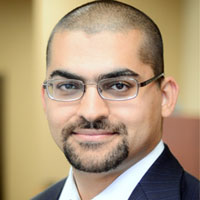NeoGraft Hair Transplant to Treat Female Pattern Alopecia
The
term “baldness” is typically associated with men, but in reality hair
loss affects women more than men. Latest reports suggest that more than
30 million American women suffer from varying degrees of hair loss.
Unlike male pattern alopecia which is more socially acceptable, female
hair loss is less understood and can lead to extreme emotional distress
for those women who suffer from it, according to hair loss experts.
The
cause, nature and pattern of hair loss in women differ drastically from
that of men, so the treatment options available to both categories of
patients are also different. Hair transplant surgeries like NeoGraft or
FUE mostly apply to men. However, recent efforts by a leading hair
transplant surgeon shows that NeoGraft surgeries can be performed
successfully in female patients as well.
Alan J. Bauman, M.D,
recently performed female hair transplant using the minimally-invasive
NeoGraft/FUE technique. The entire surgery was live webcasted to give
the world a closer view of the procedure. The hair transplant involved
a hairline lowering procedure to correct a receded hairline, enhance
density at the hairline, temple areas and restore a widow’s peak.
Efforts
like these will help patients suffering from alopecia remove the fear
associated with relatively new hair transplant techniques like NeoGraft.
NeoGraft Scar Free Hair Transplantation is highly beneficial as it
leaves no scars and does not involve painful procedure. It is gaining
popularity over older methods like FUT or strip method.
Below is the
step-by-step procedure of NeoGraft Scar Free Hair Transplantation:
- Identify and plan the pattern of hair restoration for the patient
- Prepare a small extraction area in the back of the scalp by cutting the hair short.
- Extract each naturally occurring follicular unit (containing from 1-5
hairs) from that area using a very small instrument by using gentle air
pressure to slide out each follicular hair unit.
- Implant the
hair quickly into the balding area, maintaining their viability and
increasing the success of the grafting process.
“My goal with
this live broadcast is to pierce the veil of secrecy surrounding women’s
hair loss and show women that they’re not alone, and that effective
treatment options are available to help. Not all women have to undergo
transplants; in many cases early preventative treatments can be used -
like Formula 82M Minoxidil, Propecia (for post-menopausal women), Low
Level Laser Therapy (LLLT) with LaserCap and even scalp treatments with
Latisse,” Dr. Bauman said.
To an extent female pattern hair loss
is preventable, according to Dr. Bauman. There are several options
available to them. Women need to learn about their options.
To
help women identify hair loss risks and adopt preventive measures, Dr.
Bauman offers a number of options like HairCheck, Genetic Hair Loss
Testing and Cell Therapy. Through HairCheck patients can measure and
track the amount of hair growing in a given area of scalp. Genetic Hair
Loss Testing accurately determines a person’s risk for losing hair so
they can begin preventative treatments early. Cell Therapy is an
advanced way to help the wound heal itself after hair transplants and
enhance hair growth.
Hairfear
Frequently asked questions about hair transplant procedures
How much does a hair transplant cost?
Hair transplants can vary in price based off of the area in the world that you are interested in getting a hair transplant as well as the size of the area where you may need a hair transplant. Experienced doctors in the United States will often charge some of the highest prices for a hair transplant worldwide and this is why so many travelers make the move to other parts the world like Turkey, India, Thailand, Mexico...etc for their hair transplants.
Will a hair transplant hurt?
Although hair transplants may look like a particularly
unpleasant or painful experience is actually very little discomfort involved
with the surgery itself. Hair transplants are always done under an anesthetic so there's absolutely zero pain during the treatment itself. Many people actually relate the process as being very similar to going to the dentist for filling or root canal. Mild pain can persist over the course of postop treatment but he generally just resumes for a few days.
Who can deliver the best surgery?
It's usually best to consider working with surgeons who have and IAHRS certification or international alliance of hair restoration surgeons recognition. IAHRS can often deliver recommendations for the best surgeons in each particular area.
Is this scarring noticeable?
Any type of hair transplant will require the use of incisions throughout the scalp. There can also sometimes be a small scar from the donor area towards the back of the scalp. Asking to look at photos of the surgeon's previous work will help you to see roughly how bad the scarring could be. In most cases an experienced professional can limit the look of scarring and noticeable marks from the surgery.
How long does it take for the hair to grow?
In most cases hair growth will start within eight months and you can start to see a full effect from the hair transplant after a full year. The initial signs of growth can usually start between 3 to 4 months after the surgery.
Are the results permanent?
The hair follicles that are transplanted are generally the ones which are genetically resistant against the symptoms of baldness. As long as you receive hair loss treatment later in your life after the symptoms of balding have started to subside, you can have a better chance at permanent results.
While everyone know you've had surgery?
If you want to limit the chance that people may find out about your surgery it's important to give at least three weeks of healing as the surgical area will be affected and red just after surgery. After around a month of healing it can look far less noticeable. You could consider wearing a hat while time passes or opting for some extra time off if possible.
How long should I rest after surgery?
It's recommended to rest for at least a few days after surgery so that your body can recover. Trenton to over exert yourself and limit sexual activity, running in the gym for around 10 days after surgery.
Is it possible to lose more hair as a result of surgery?
There is always a chance of shock loss which happens when the hair is weak and miniaturizing after the surgery. As long as the surgeon is choosing the correct hair follicles and performing the surgery well it's possible to minimize the chance of this happening however.
Will I need another hair transplant?
The need for another transplant really depends on the individual. With a solid foundation surgery and working to potentially bolster results with drug therapy, you can improve the stability of the hair that was transplanted as well as prevent further loss. Getting a hair transplant early
on in your 20s or early on in life could lead to needing long-term transplants as hair loss can be progressive.







